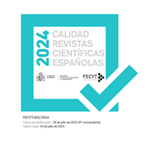Interculturalidad y representación social: el conflicto de la Araucanía en la prensa chilena. Casos Melinao y Luchisnger
Resumen
Esta investigación tiene como finalidad revelar las diferencias en el tratamiento y cobertura informativa respecto a los casos Luchsinger-Mackay (asesinato de matrimonio de latifundistas) y Melinao (asesinato de comunero mapuche), sucesos que se enmarcan en el conflicto intercultural en la región de La Araucanía, Chile. Se realiza un Análisis de Contenido de la cobertura mediática en dos medios de comunicación de prensa escrita de circulación nacional, El Mercurio, La Tercera y un diario regional El Austral de la Araucanía. Se pretende identificar cuáles son las representaciones que estos diarios –todos vinculados a la derecha, pero pertenecientes a distintos conglomerados- le otorgan a la problemática. La naturaleza de la metodología utilizada para emprender el análisis responde a una línea mixta, mezclando métodos cualitativos con cuantitativos. Por medio de este estudio se ha logrado formular un panorama más preciso sobre las principales representaciones sociales creadas por los medios en cuestión, respecto a los actores del conflicto, a saber mapuches y latifundistas; especialmente cuando la posición de víctima se invierte entre uno y otro caso. La Tercera demostró ser el medio analizado más abierto a la pluralidad en la información, facilitando un diálogo intercultural. El Mercurio evidencia una clara tendencia a la criminalización del pueblo mapuche, reforzando prejuicios y estereotipos. Por último, El Austral de La Araucanía, presentó representaciones que criminalizaban al movimiento mapuche, estableciendo y reforzando un vínculo entre la etnia y el comportamiento delictual.
Descargas
Descarga artículo
Licencia
La revista Estudios sobre el Mensaje Periodístico, para fomentar el intercambio global del conocimiento, facilita el acceso sin restricciones a sus contenidos desde el momento de su publicación en la presente edición electrónica, y por eso es una revista de acceso abierto. Los originales publicados en esta revista son propiedad de la Universidad Complutense de Madrid y es obligatorio citar su procedencia en cualquier reproducción total o parcial. Todos los contenidos se distribuyen bajo una licencia de uso y distribución Creative Commons Reconocimiento 4.0 (CC BY 4.0). Esta circunstancia ha de hacerse constar expresamente de esta forma cuando sea necesario. Puede consultar la versión informativa y el texto legal de la licencia.










